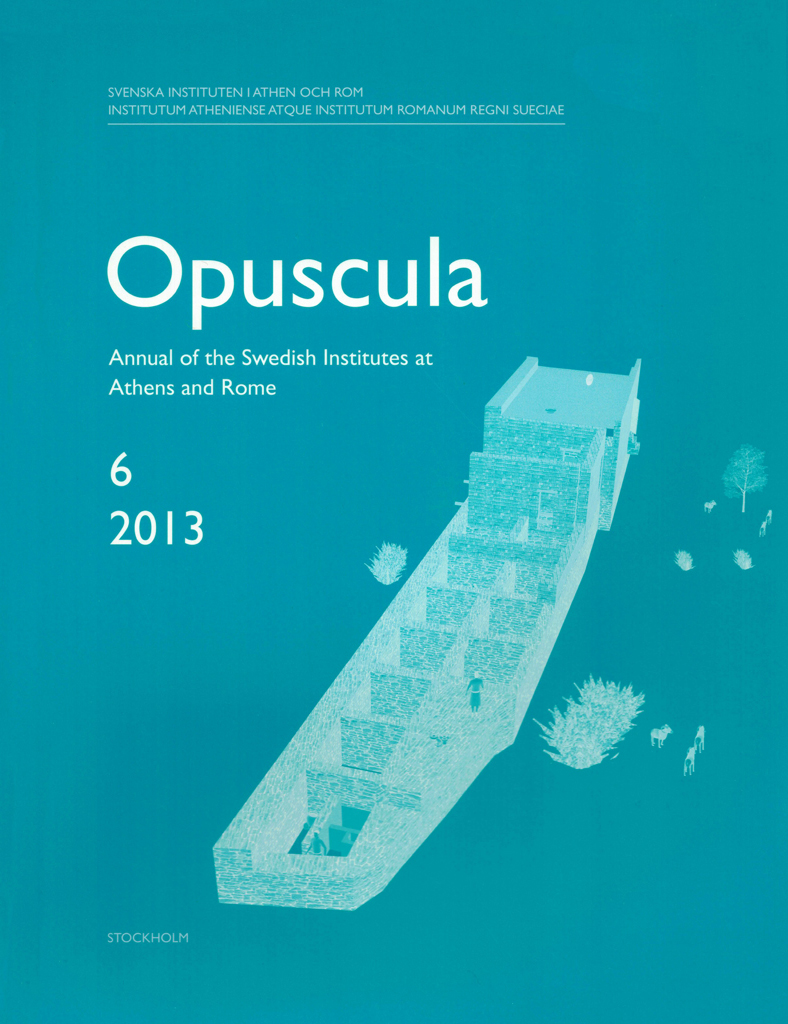All content of Opuscula 13 is available with open access. Printed edition distributed by Eddy.se AB. Also available at Amazon.com, Adlibris, and Bokus. View volume at ERIH PLUS. Religion and family politics in Hellenistic Kalaureia. Three new inscriptions from the sanctuary of Poseidon By Nikolaos Papazarkadas (University of California, Berkeley, USA) & Jenny Wallensten (Swedish Institute at Athens, Greece) Abstract This article presents three unpublished Hellenistic inscriptions from the sanctuary of Poseidon in Kalaureia (modern Poros): two found during archaeological excavations on the site and one recorded in a letter that was once part of Ioannis Kapodistrias’ official correspondence. All three inscriptions were dedicatory and carved on bases supporting portrait statues. Interestingly, they were offered to Poseidon by members of a single family already known from other documents in the Kalaureian epigraphic corpus. Remarkably, eight out of the 18 inscriptions discovered in Kalaureia make repeated references to men and women of this very family, which appears to have materially dominated Poseidon’s temenos and its environs during the 3rd and 2nd centuries BC through the careful placement of portraits of its members. Most of these statues were conspicuously placed by the entrance to the sanctuary, though at least one of them…
Opuscula 6 (2013) is now available for purchase and free download at Bokorder.se. Also available at Amazon.com, Amazon.de, Bokus.com and Adlibris.com. The agency of Greek and Roman statues. From Homer to Constantine By Jan N. Bremmer Abstract In the Archaic period the Greeks did not yet conceptualize the difference between a divinity and its statue. Therefore, stories that stressed the agency of statues separate from their divinities must have seemed less strange at that time than when the statues had become independent, so to speak, from their gods or goddesses. The latter started to happen in the transitional period to the Classical era when the well-known triad of divinities—heroes—mortals came into being, and philosophers began to criticize the worship of statues. All these changes together led to a development in which the agency of statues increasingly became noteworthy. After the 5th century BC we keep hearing about the agency of statues but we can also notice a growing critique of the worship of statues by different philosophical schools. In both Greece and Rome divine statues manifested themselves in particular during moments of crisis or of a decisive political character. In the Greek East the belief in the agency of statues…


